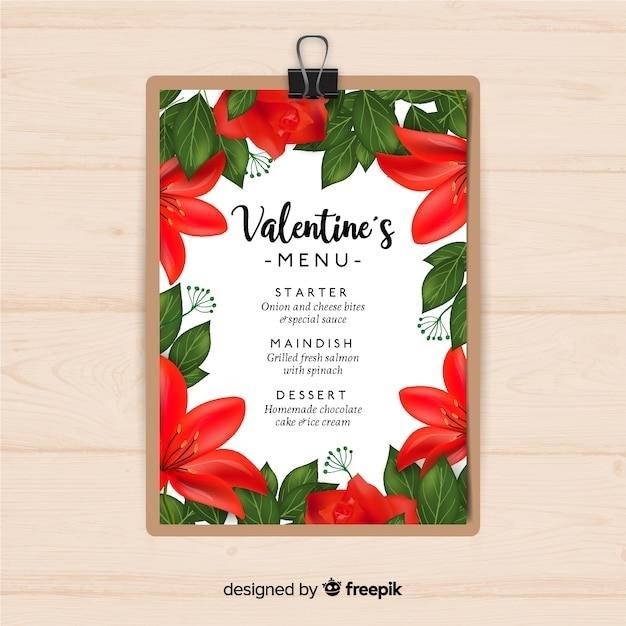printable free model boat plans pdf
Finding Printable Free Model Boat Plans
Numerous online resources offer free‚ printable model boat plans in PDF format. Websites dedicated to model shipbuilding often provide a wide selection of designs‚ ranging from simple to complex vessels. These downloadable plans allow hobbyists to build various types of boats at home‚ saving on the cost of purchasing pre-made kits. Always verify the source’s reliability before downloading.
Where to Find Free Plans Online
The internet is a treasure trove for those seeking free model boat plans. Dedicated websites specializing in model ship building often host extensive libraries of downloadable blueprints. These sites frequently categorize plans by boat type (e.g.‚ sailboat‚ motorboat‚ tugboat)‚ size‚ and skill level‚ making it easy to find suitable projects. Some platforms allow users to filter plans based on specific features or dimensions‚ streamlining the search process. Look for sites with established reputations and positive user reviews to ensure plan accuracy and quality. Forums and online communities dedicated to model building are also valuable resources. Members often share their own plans or point towards reliable sources‚ fostering a collaborative environment. Remember to always check the terms of use before downloading any plans to ensure they are indeed free for personal use.
Reliable Sources for Downloadable PDFs
When searching for downloadable PDF model boat plans‚ prioritizing reliable sources is crucial. Established websites dedicated to model shipbuilding‚ with a long history and positive user feedback‚ are generally safe bets. These platforms often have robust systems for verifying the accuracy and completeness of uploaded plans‚ minimizing the risk of encountering flawed or incomplete designs. Look for sites with well-organized plan libraries‚ clear categorization systems‚ and detailed plan descriptions that include specifications like scale‚ materials‚ and skill level. Consider websites associated with model building organizations or publications known for their expertise and commitment to quality. Checking the site’s “About Us” section can help assess its credibility and experience. Be wary of sites with excessive advertising or those that require personal information beyond what’s necessary for downloading. Always review user comments and ratings before downloading a plan to gauge the experiences of other model builders;
Types of Boats Available in Free Plans
The variety of model boats available in free printable plans is surprisingly extensive. You can find plans for classic sailing vessels‚ from elegant yachts to sturdy workboats‚ each offering a unique building challenge and aesthetic appeal. For those who prefer powered craft‚ numerous plans exist for motorboats‚ ranging from simple fishing boats to sleek speedboats. Even more specialized designs are often available‚ such as tugboats‚ ferries‚ and even submarines. The scale of the models also varies greatly‚ allowing builders of all skill levels to find suitable projects. Some plans cater to beginners with simpler‚ larger-scale designs‚ while others challenge experienced modelers with intricate‚ smaller-scale replicas of famous ships. The choice is vast‚ and the selection often includes both static display models and those designed for radio control operation‚ offering diverse options based on your interests and experience level. Whether you prefer a historical replica or a futuristic design‚ the probability of finding a free plan that matches your vision is high.
Understanding the Plans
Before starting construction‚ carefully review the provided blueprints. Familiarize yourself with the terminology‚ scale‚ and measurements. Accurate interpretation is crucial for a successful build. Choose appropriate materials based on the plan’s specifications for optimal results.
Deciphering Blueprint Terminology
Model boat plans‚ even free ones‚ often employ specialized terminology. Understanding these terms is vital for accurate construction. Common terms include “keel‚” referring to the boat’s central longitudinal structural member; “stem‚” the forwardmost part of the hull; and “stern‚” the rearmost section. “Frames” are the ribs providing the hull’s shape‚ while “planking” describes the outer covering. “Bulkheads” are internal partitions adding strength and dividing compartments. “Masts‚” “booms‚” and “sails” are components of sailing vessels. “Decks” form the upper surface. “Sheerline” denotes the top edge of the hull’s side. “Waterline” indicates the point where the hull meets the water. “Draft” measures the depth of the hull below the waterline. “Beam” represents the boat’s widest point. “Length overall” (LOA) is the total length‚ while “length at the waterline” (LWL) is the length at the waterline. Understanding these terms ensures you correctly interpret the plan’s instructions.
Scale and Measurement Considerations
Free model boat plans often specify a scale‚ indicating the ratio between the model’s dimensions and the real-life vessel. For example‚ a 1⁚100 scale means one inch on the plan equals 100 inches on the actual boat. Accurately interpreting the scale is crucial for precise construction. Use a ruler or scale calibrated in the plan’s units (typically inches or millimeters). Pay close attention to all measurements‚ as even slight inaccuracies can affect the model’s appearance and functionality. Double-check measurements before cutting materials. If the plan lacks a specified scale‚ you might need to deduce it by comparing known dimensions (like the length or beam) to the plan’s measurements; If working with metric and imperial units‚ careful conversion is necessary to avoid errors. Consider using a calculator or conversion chart to ensure accuracy. When transferring measurements from the plan to your materials‚ use a sharp pencil for precise marking to avoid mistakes and ensure your model accurately reflects the blueprint.
Material Selection Based on the Plan
The success of your model boat hinges significantly on choosing the right materials‚ guided by your chosen plan. Carefully review the plan’s specifications; it might recommend particular materials for the hull‚ deck‚ masts‚ and other components. Common materials include balsa wood (lightweight and easy to carve)‚ plywood (stronger and suitable for larger models)‚ basswood (a good all-around choice)‚ and plastic sheets (for simpler designs). The plan might suggest specific wood thicknesses; adhering to these recommendations ensures accurate scaling and structural integrity. If the plan doesn’t specify materials‚ consider the boat’s size and intended use. For smaller‚ simpler models‚ lightweight balsa wood works well. Larger‚ more complex models might require stronger materials like plywood or a combination of woods. Also‚ consider the availability and cost of materials. Before purchasing‚ calculate the quantity needed based on the plan’s measurements to avoid shortages or excess. Remember that the choice of materials directly impacts the model’s final look‚ durability‚ and overall weight‚ so careful consideration is key.
Building Your Model Boat
Constructing your model boat involves meticulous attention to detail. Follow the plan’s instructions carefully‚ ensuring each step is completed accurately. Take your time‚ and remember that patience and precision are vital for a successful build. Enjoy the process!
Step-by-Step Construction Guide (General)
While specific instructions vary depending on the chosen plan‚ a general approach to model boat construction usually follows these steps. Begin by carefully reviewing the entire plan to understand the assembly process and familiarize yourself with all components. Next‚ prepare your workspace‚ ensuring ample room and good lighting. Accurate cutting of the wood or other materials is crucial. Use sharp tools and follow the plan’s dimensions precisely. Pay attention to the sequence of assembly to avoid errors. For example‚ the hull may need to be constructed before adding decks or superstructures. Dry-fitting components before gluing is highly recommended to ensure proper alignment. Use appropriate adhesives‚ allowing sufficient drying time between steps to avoid weakening the structure. Sanding and finishing are essential for a smooth‚ aesthetically pleasing final product. Remember to refer back to the plan frequently throughout the building process. Following these guidelines will contribute significantly to the success of your model boat project. Patience and attention to detail are key to a quality build.
Essential Tools and Materials
The specific tools and materials needed will depend heavily on the complexity of your chosen model boat plan. However‚ some essentials are common across most projects. Accurate measurement is paramount‚ so a high-quality ruler‚ measuring tape‚ and possibly calipers are crucial. Sharp woodworking tools are necessary for precise cuts; these might include various saws (coping saw‚ hand saw‚ or even a small power saw for larger projects)‚ chisels‚ and sandpaper in assorted grits. Depending on the boat’s material‚ you may need specialized tools such as a hobby knife for cutting balsa wood or a specialized cutting mat. Adhesives are vital‚ with wood glue being a common choice‚ but epoxy might be preferable for certain joints. Clamps will be helpful for holding pieces together while the glue dries. If your model includes rigging or small details‚ fine-tipped tweezers and potentially small pliers will prove useful. Finally‚ remember finishing materials such as paint‚ varnish‚ or sealant to protect your finished model and enhance its appearance. Always prioritize safety when using sharp tools and adhesives; protective eyewear and gloves are recommended.
Troubleshooting Common Building Issues
Building model boats from plans can present various challenges. One common problem is inaccurate measurements leading to ill-fitting parts. Double-checking measurements at each stage and using precise cutting techniques are crucial to avoid this. Another issue is wood warping or cracking‚ especially with balsa wood. Proper wood selection and storage in a climate-controlled environment can minimize this risk. Ensure the wood is adequately acclimated to the environment before starting construction. Glue application is another frequent source of trouble; using the correct amount and allowing sufficient drying time prevents weak joints. If parts don’t align perfectly‚ gentle sanding and careful refitting might be necessary. For more complex issues‚ such as broken parts‚ using wood filler or epoxy to reinforce damaged areas can be a solution. Finally‚ remember that patience is key. If you encounter difficulties‚ take a break and revisit the problem later with a fresh perspective. Referring back to the plans meticulously and seeking advice from online model-building communities can also be extremely helpful in resolving unforeseen complications.


